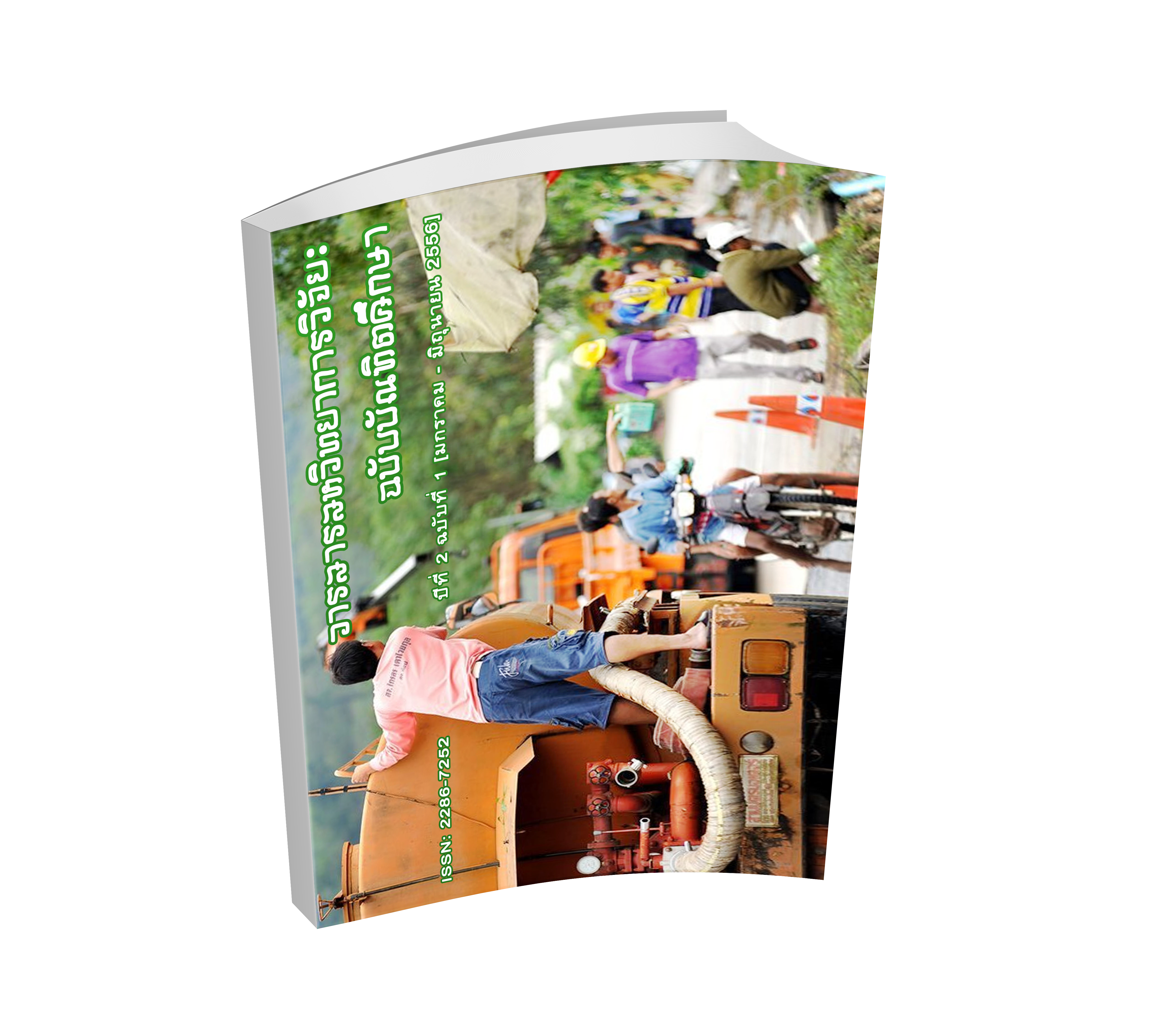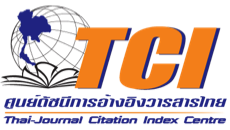การจัดการสภาวะน้าท่วม ในต้าบลท่าโรงช้าง อ้าเภอพุนพิน จังหวัดสุราษฎร์ธานี
Keywords:
Flood Management, Local GovernmentAbstract
This paper aimed to study the flood situation, causes and management, of Tharongchang Sub-District Administrative Organisation (SAO), Phunphin, Suratthani. The data was collected by in-depth interviewing and then analysed and reported in descriptive form. The study illustrated that Tharongchang experienced impacts and damages of floods annually. In 2008, 10% of the total area was damaged. In 2009, the impact increased to 30% and the heaviest impact was in 2010, which 70% of the area was damaged. The total damage cost was 633,413,930 baht. As for the causes, it was found that most of the areas were lowlands, the waterway/canal had become shallow, and houses and factories were constructed obstructing waterways. Flood management of Tharongchang consisted of 4 stages. The first stage was flood warning, which could be divided into 2 circumstances. The first was to increase readiness of the by suggesting the community to monitor Thai Meteorological Department report constantly, monitor and evaluate water situation, prepare to collect belongings, important documents, and emergency survival kits, and prepare for evacuation. The second was to alert to evacuate, which could be done by using manual siren, village broadcasting tower, temple’s or community’s drum, and/or whistle or firework. The second stage was community support, establishing evacuation centres or temporary shelters, preparing the facilities, registering flood victims, supplying flood victim with survival kits, and establishing donation centres for flood victims. The third stage was water drainage which could be divided into 2 circumstances. One was water drainage during crisis situation; placing sandbags along Phumduang River bank, pumping water out of lower areas into Phumduang River, and dredging shallow waterways and canals to increase water drainage. Another was long-term drainage; improving water drainage systems, building reinforced concrete dykes and dredging shallow waterways/canals. The fourth stage was the restoration and rehabilitation. First, surveying damages in 4 matters; victim names, damaged houses and buildings, damaged agricultural areas, and damaged factories and enterprises. Second, restoring and rehabilitating by providing financial aids, repairing damaged houses and buildings, requesting compensations from related agricultural organisations, deducing taxes for all victims, setting up courses to promote jobs, and conducting Big Cleaning Day activities. Community participation in flood management of Tharongchang, Phunphin, Suratthani has demonstrated that people gave priority to the participation in all stages, including the selection of flood management volunteers, attending the courses of flood prevention, participating in damage surveying for transparency purpose, and participating in waterways and canals dredging activities regularly to create unity in the community, and so on.
Downloads










.png)


